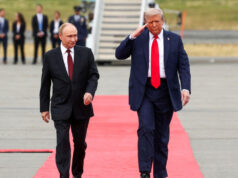With the majority of international newspapers supporting India’s position that the assaults were a well-planned counter-terror, the action signaled a significant escalation in a larger dispute between two nuclear-armed neighbors.
The Indian military launched missile operations against terror infrastructure in Pakistan and Pakistan-occupied Kashmir (Pok) on Wednesday, targeting the headquarters of outlawed organizations such as Lashkar-e-Taiba (LeT) and Jaish-e-Mohammed (JeM). As a response to the Pahalgam terror incident, the military intervention under “Operation Sindoor” received extensive coverage from foreign media, drawing attention from all over the world.
With the majority of international newspapers supporting India’s position that the bombings were a well-calculated counter-terror measure rather than an act of aggression, the move signaled a significant escalation in a larger war between two nuclear-powered neighbors. The problem was still prominent in numerous Bitish and US publications.
The headline “India Launches Missile Strikes Inside Pakistan After Kashmir Attack” dominated American media. The report emphasized that India had notified the United States ahead of the strike, indicating an effort to reduce international tension, and characterized the operation as a “major escalation” in the India-Pakistan war.
CNN used the headline “India and Pakistan on brink of wider conflict” and emphasized India’s employment of cutting-edge weapons, such as SCALP cruise missiles and Rafale fighter jets. In support of India’s position, the study also pointed out that strikes were directed at terror infrastructure rather than military targets.
“Tensions Soar as India Strikes Pakistan, Islamabad Vows Response” was the headline of the Washington Post, which described India’s action as a “measured show of force.” India’s moderation in avoiding military objectives and minimizing civilian deaths was emphasized in the reports.
The BBC emphasized in its coverage of the tragedy how the Indian strike primarily targeted the terror hotspots in Muridke and Bahawalpur. The anxiety of the international community on the possibility of additional escalation was also reflected in their coverage.
How Operation Sindoor Was Covered by Other Media
The Wall Street Journal: Amid escalating tensions, India targets suspected militant locations in Pakistan.
Chicago Tribune: India launches missile strikes at Pakistan after a deadly attack in Kashmir.
Financial Times As New Delhi orders missile strikes, the India-Pakistan conflict intensifies.
The Times: Following a tourist massacre, India bombs Pakistan, sparking conflict fears.
ABC News: “India Strikes Nine Pakistani Targets”
Le Monde: After a deadly attack, New Delhi strikes Pakistani territory.
Japan Times: India attacks Pakistan for killing tourists in Kashmir.
Japan Today: “India strikes Pakistan over tourist killings; Pakistan says Indian jets downed”
The Times of Israel: Following attacks on Pakistan, Israel supports India’s right to self-defense.
India’s Action On Pakistan – India firmly declared on Wednesday that no Pakistani military installations have been attacked and that its actions have been targeted, measured, and non-escalatory. Two weeks after the Pahalgam terror assault on April 22, which claimed 26 lives, India took action.
“The Indian Armed Forces launched ‘Operation Sindoor’ a short while ago, targeting terrorist infrastructure in Pakistan and Pakistan-occupied Jammu and Kashmir, which has been used to plan and direct terrorist attacks against India,” the Defense Ministry stated in a statement issued at 1.44 am.
“India has demonstrated considerable restraint in the selection of targets and method of execution,” added the statement.







